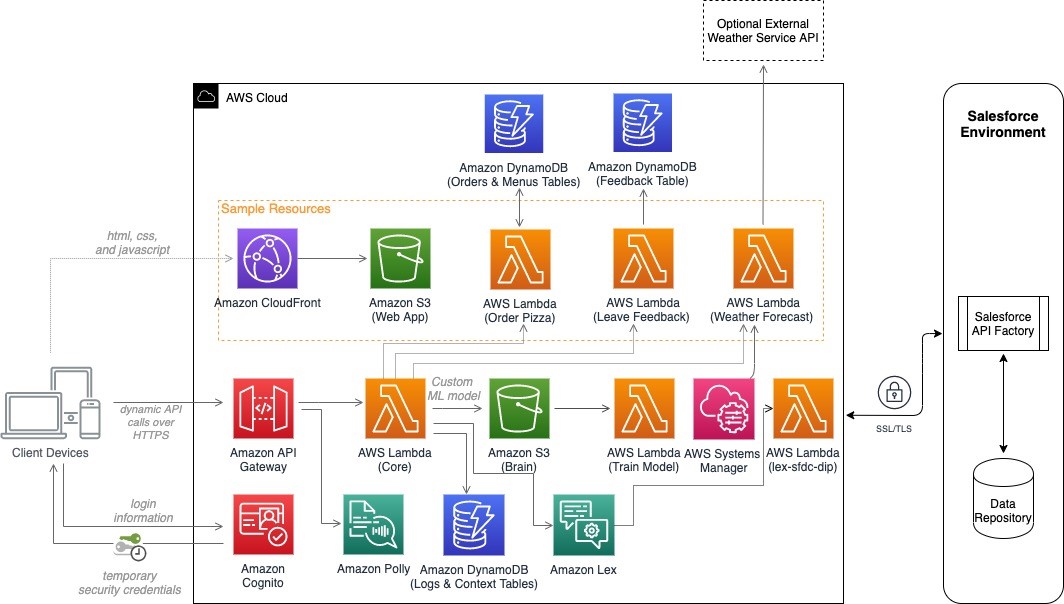AWS Architecture Blog
Category: Artificial Intelligence
Architecting Persona-centric Data Platform with On-premises Data Sources
Many organizations are moving their data from silos and aggregating it in one location. Collecting this data in a data lake enables you to perform analytics and machine learning on that data. You can store your data in purpose-built data stores, like a data warehouse, to get quick results for complex queries on structured data. […]
Using AppStream 2.0 to Deliver PACS and Image Analysis in Clinical Trials
Hospitals and clinical trial sites manage sensitive patient data. They are often required to grant remote access to custom Windows-based applications for patient record review and medical image analysis. This typically requires providing physicians and staff with remote access to on-premises workstations over VPN, with some flavor of remote desktop software. This can be both […]
Field Notes: Develop Data Pre-processing Scripts Using Amazon SageMaker Studio and an AWS Glue Development Endpoint
This post was co-written with Marcus Rosen, a Principal – Machine Learning Operations with Rio Tinto, a global mining company. Data pre-processing is an important step in setting up Machine Learning (ML) projects for success. Many AWS customers use Apache Spark on AWS Glue or Amazon EMR to run data pre-processing scripts while using Amazon SageMaker […]
Building a Cloud-based OLAP Cube and ETL Architecture with AWS Managed Services
For decades, enterprises used online analytical processing (OLAP) workloads to answer complex questions about their business by filtering and aggregating their data. These complex queries were compute and memory-intensive. This required teams to build and maintain complex extract, transform, and load (ETL) pipelines to model and organize data, oftentimes with commercial-grade analytics tools. In this […]
Overon (Mediapro Group): World-class Audiovisual Production Center on AWS
Every evening, millions of people sit on their couch looking for entertainment. Switching on a device is easy, but what really happens behind the scenes? How is your favorite content prepared so you can see it through your chosen streaming apps, TV channels or websites? The challenge that media companies face today is huge, as […]
Discovering Hot Topics using Machine Learning
Successful businesses not only have great products and services; they also have a deep understanding of their customers. Companies that can use behavioral analytics in marketing automation platforms are better equipped to deliver real-time marketing efforts. According to a research case study from Deloitte, companies with a customer-centric business model are 60% more profitable. Knowing […]
Architecting Cross-channel Intelligent Customer Engagements
Recently, we have had customers express the desire to build “omni-channels.” These omni-channels provide a centralized overview of digital engagement channels that help you better understand your customers and offer a more personalized experience. Many companies have tried or are trying to implement an omni-channel strategy. However, because most existing channels are built on different platforms and […]
Build Chatbots using Serverless Bot Framework with Salesforce Integration
Conversational interfaces have become increasingly popular, both on web and mobile. Businesses realize these interactions are resulting in quicker resolutions of customer concerns than a more traditional approach of agent interactions. An intelligent chatbot on top of customer-facing platforms comes with inherent benefits. Among these are 24/7 customer support with no agent wait-times, improved operational […]
Field Notes: Accelerate Research with Managed Jupyter on Amazon SageMaker
Research organizations across industry verticals have unique needs. These include facilitating stakeholder collaboration, setting up compute environments for experimentation, handling large datasets, and more. In essence, researchers want the freedom to focus on their research, without the undifferentiated heavy-lifting of managing their environments. In this blog, I show you how to set up a managed […]
Scaling up a Serverless Web Crawler and Search Engine
Introduction Building a search engine can be a daunting undertaking. You must continually scrape the web and index its content so it can be retrieved quickly in response to a user’s query. The goal is to implement this in a way that avoids infrastructure complexity while remaining elastic. However, the architecture that achieves this is […]









